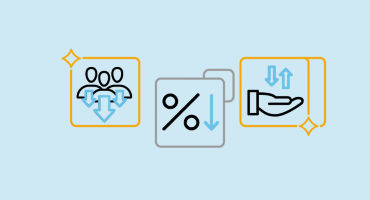Skip to main content
- Funds
- Insights
- Capabilities
- About Us
- My Account
The views expressed are those of the author at the time of writing. Other teams may hold different views and make different investment decisions. The value of your investment may become worth more or less than at the time of original investment. While any third-party data used is considered reliable, its accuracy is not guaranteed.
As foreshadowed by US Federal Reserve (Fed) Chair Jerome Powell in his recent congressional testimony, as well as by other Fed officials, the Federal Open Market Committee (FOMC) in December accelerated the timeline for tapering its large-scale asset purchase program. The Fed’s monthly purchases of US Treasuries and agency mortgage-backed securities (MBS) will decline at a faster pace, before coming to an end in March 2022. The culprit: rising inflation.
US inflation has been running persistently higher than both the Fed’s forecasts and its target range and has shown signs of broadening out across more goods and services. In response, the FOMC increased its inflation forecasts while also decreasing its growth outlook, as labor shortages and supply-chain bottlenecks have created greater inflationary pressures than the FOMC previously anticipated. The mounting inflationary risks also led the median FOMC participant to now expect the FOMC to hike interest rates three times in 2022 and three times in 2023. The US Treasury yield curve flattened following the release of the FOMC’s revised summary of economic projections, as the front end of the curve moved higher.
While not an imminent risk, market participants will eventually turn their attention to the timing of the Fed’s upcoming reduction of the size of its balance sheet (i.e., no longer reinvesting the proceeds of maturing US Treasuries and agency MBS or even outright selling such securities). During the rate tightening cycle that commenced in 2015, the Fed waited until after raising the fed funds rate to 1% to begin paring back its balance sheet. If it follows a similar playbook this time around, the Fed could start to wind down its balance sheet by early 2023.
Notably, in its updated summary of economic projections, the Fed did not alter its longer-term fed funds rate projection (its terminal rate) from 2.5%. In a recent Fed survey of investment managers, I responded that I believed the Fed’s terminal rate should be 1.75%. This is the rate at which I think the US economy would be close to full employment with stable inflation. I suspect the Fed will likely be able to stay “on hold” at that point, which would be a much lower terminal rate than in past hiking cycles.
The Omicron variant of COVID-19 has introduced greater uncertainty to the US (and global) economic outlook, with much still unknown at this juncture. For example, the implications could vary significantly, depending on the variant’s transmissibility, vaccine efficacy against it, and other factors. The information we have now points toward Omicron already being widespread globally, with meaningfully higher transmissibility than the Delta variant (also still circulating). On the other hand, vaccine makers have indicated that a new variant-specific version of the vaccine could be widely available in as little as six months (including time required for regulatory approval and mass distribution).
I am closely monitoring developments on this front to be able to reassess the potential economic and market implications as needed. As of this writing, investor concerns around the Omicron variant are reflected in lower crude oil prices and the collapse of front-end inflation breakeven rates, although the Fed appears determined to continue on a path toward policy normalization (for now anyway).
I still believe the US Treasury curve could flatten from here and I find the 20-year point on the curve most attractive in the wake of its recent underperformance versus the 30-year Treasury. At some point, if bond yields climb higher, I would expect buyers to step into the Treasury market in larger numbers, particularly given the appeal of US Treasury yields to overseas investors on a currency-hedged basis. The US rates market has proven surprisingly resilient to date, given the relative strength of economic data and recent upside inflation surprises.

Twilight zone: how to interpret today’s uncertain macro picture
Macro Strategist John Butler and Investment Director Marco Giordano explore how to interpret today’s uncertain macroeconomic picture and its key implications.

Fiscal versus tariffs: what wins out for Europe?
Just as investors were starting to explore the potential for growth in Europe, Trump’s tariffs landed. To what extent is the case for Europe still intact?

Trump 2.0: US election market impacts
In the wake of the US election, macro strategists Juhi Dhawan and Michael Medeiros join host Thomas Mucha to discuss the market, policy, and geopolitical implications of Trump 2.0.
Debt and dysfunction in Washington: The US hits the ceiling (again)
Global Investment Strategist Nanette Abuhoff Jacobson talks to Macro Strategist Mike Medeiros about the US debt-ceiling showdown and considers its potential investment implications.

2023: The year of disinflation for the US economy
In the coming year, US Macro Strategist Juhi Dhawan expects to see inflation begin to decline, the economy adjust to higher interest rates, and labor markets feel the pain of restrictive Fed policy.

URL References
Related Insights